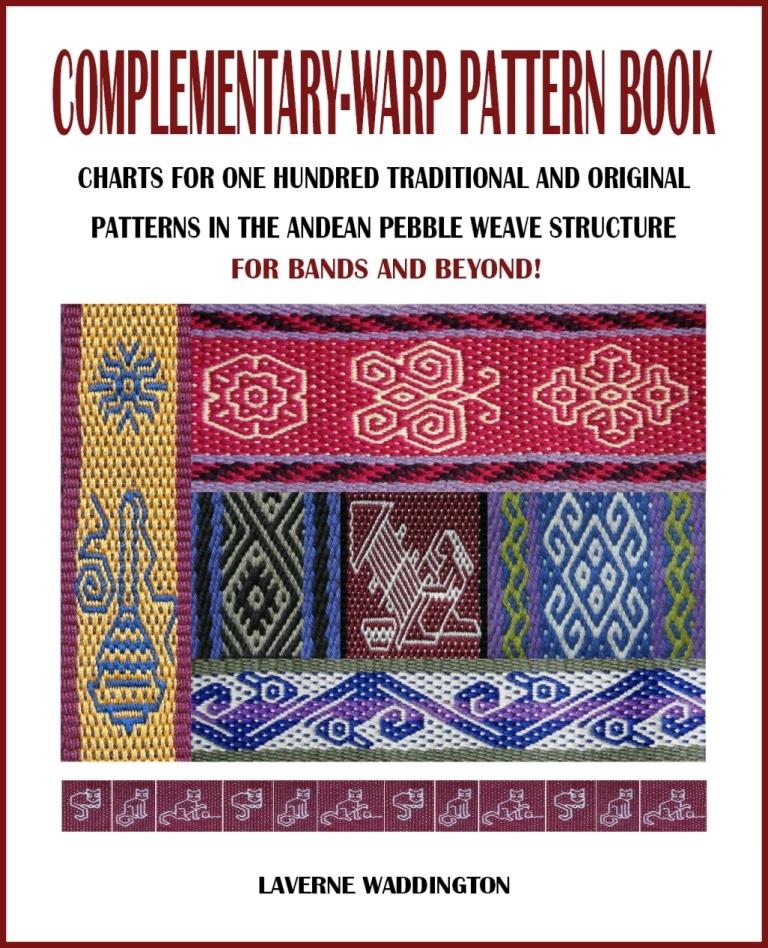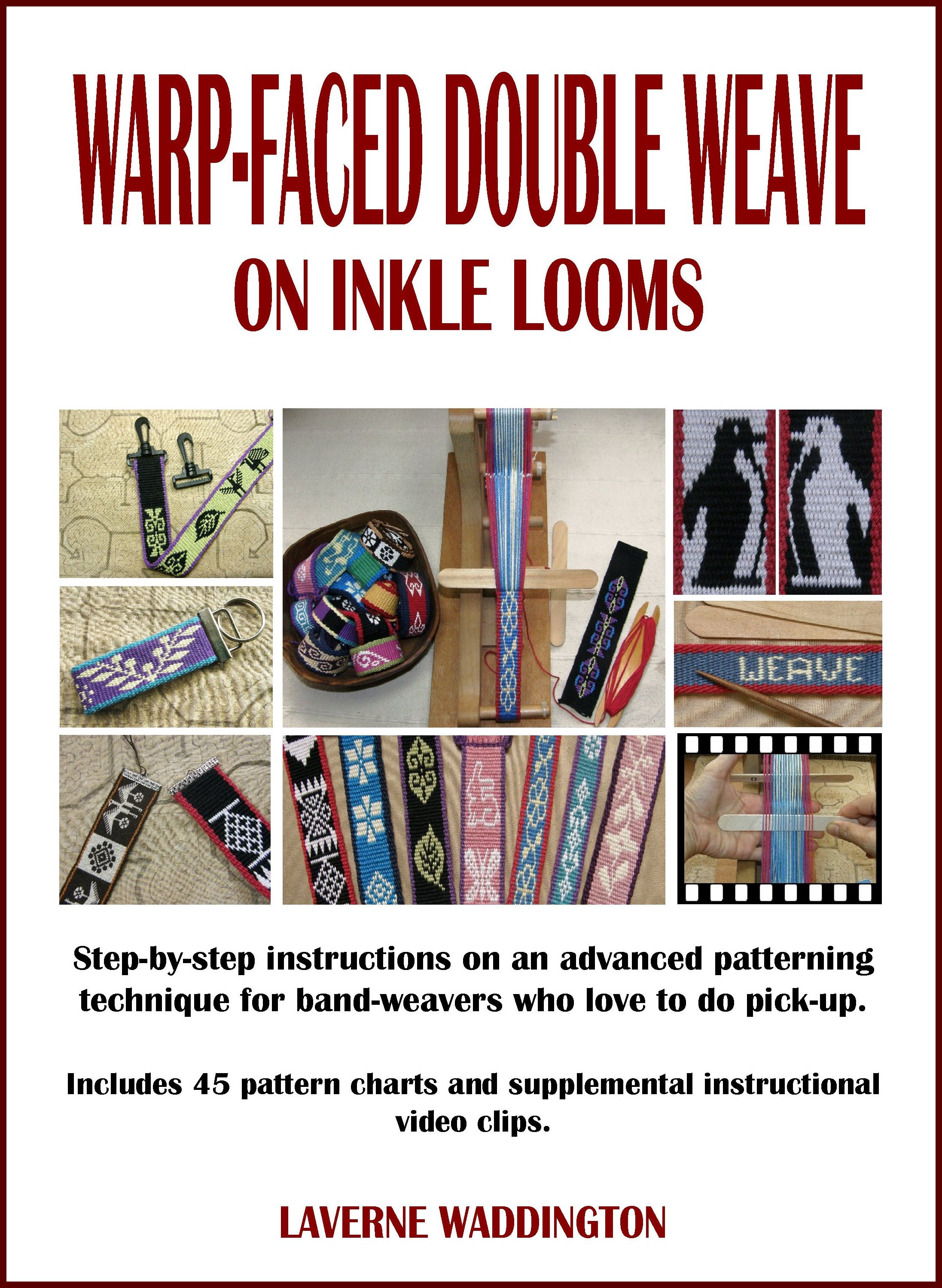PATTERN CHARTS:
Click on these linked titles to see separate pages for my sets of pattern charts…….
Pre Columbian textile fragment with supplementary weft patterning
A design from the central Bolivian highlands in supplementary warp technique.
Enjoy!! I hope you can use them in a project of your own. 🙂
























Great! You’ll be getting requests for selling them, too, soon, I bet! I’d buy some!!! 🙂
Ellen
By: Ellen Turner on December 22, 2009
at 4:49 pm
Thank you Ellen!! Never thought about that………….
By: lavernewaddington on December 22, 2009
at 6:50 pm
Thank you! I will try it out. With this opportunity I want to wish you all the best, have a very nice time at Christmas and I hope the New Year will bring all that you wish for…..
By: laura on December 22, 2009
at 5:08 pm
Best wishes for the holiday season to you too Laura!
By: lavernewaddington on December 22, 2009
at 5:14 pm
Laverne,
Thank you for this post.
I wish you a lovely Xmas and a 2010 full of new weaving beauties.
Abraço
Helena
By: Helena Falcão on December 22, 2009
at 6:11 pm
The very same to you Helena. Keep inspiring us with your beautiful Hui Kuin design weavings.
By: lavernewaddington on December 22, 2009
at 6:46 pm
Great, Laverne
I have now sorted out how to do the ends of my mug rugs, and will have a go at one of your designs soon.
Happy New Year
By: Jill D on January 4, 2010
at 9:11 am
Great, Jill! I would love to see a picture when you are done.
By: lavernewaddington on January 4, 2010
at 11:33 am
Hola, mira la verdad no se si entiendas el español, pero por lo que he visto en tus blogs o en Weavolution de tus viajes creo que si.
Bueno, te escribo para que me ayudes a entender bien el telar de cintura, pues la verdad se me dificulta hacer dibujos; hacer tejidos balanceados o llanos sin dibujos ya lo domino, pero lo demás no. Y aunque he visto tus páginas, la verdad no domino muy bien el inglés y me confundo. También he buscado libros sobre el tema pero no he encontrado. Bueno por el momento me despido y espero me puedas ayudar.
By: berenice on January 11, 2010
at 12:53 am
Berenice,
Gracias por tu visita. Espero que vuelvas. Te puedo recomendar un libro en espanol. Te enviare un email.
By: lavernewaddington on January 11, 2010
at 1:11 am
si puedes recomendarme un libro en español, porque el ingles no lo domino, desde ya muchas gracias, eres genial por compartir todos tus conocimientos, muchas gracias, haces cosas preciosas, un saludo muy afectuoso,
Cristina
By: Cristina on November 14, 2010
at 7:14 pm
thank you ever so much for sharing!! I’ve always been fascinated with backstrap weaving but couldn’t seem to learn much about it. You have broadened my world! This is a style of weaving that I would like to try, as it would require less space. Now that I live in a smaller home and have asthma, I need to sell my rug loom. I will not give up weaving, somehow! Where could I find a backstrap loom? Do you spin all your cotton? Or, where is your source of yarn/warp?
By: Rita Fleener on January 16, 2010
at 2:01 am
Hi Rita,
I am in Bolivia and not in one of the traditional weaving areas so I just buy crochet cotton for just about everything I weave. Mercerized is best as it stands up well to the abrasion of warp faced weaving. You could buy wool but you would need to respin it-tighten it up so that it is strong enough. You know the backstrap loom is basically a bunch of dowel rods or cut down broom handles. Did you read last weeks’s post on my blog about how to put one together? I believe that Harrisville sell a backstrap loom and that it comes with a rigid heddle but I have never actually seen one. Weaving Southwest also make and sell a loom complete with leather backstrap. Where exactly do you live?
By: lavernewaddington on January 16, 2010
at 2:44 am
I live in Iowa and did order a back strap loom. Now, to get at it! Have to find something to attach it to. Will have to sit in a chair as I can’t get up and down from the floor. What would you suggest for a first time project?
By: Rita Fleener on November 28, 2011
at 12:51 am
Your first time “project’ should be getting comfortable with all aspects of warping, setting up and weaving on the loom. Make sure you have a good sturdy way to make your warp…don’t use stakes for warping that will lean…make sure you choose suitable yarn…make sure you attach your warp to something secure. Follow the instructions in my WeaveZine article which will lead you, after a first practice band, to making your own backstrap. Here is the link to the WeaveZine article:
http://www.weavezine.com/content/backstrap-basics
By: lavernewaddington on November 28, 2011
at 1:04 am
Your designs are beautiful and very ambitious. You are generous in sharing your patterns. Thank you. I hope that I can someday utilize them .
By: Barbara Ackerman on April 2, 2010
at 6:04 am
Thank you for sharing your designs. I have to say the very first photo or the project in black and red really spoke to me. I really want to try to make something like that.
By: Cindy on May 13, 2010
at 6:59 pm
Hi Cindy,
I hope you do. I have a tutorial for one-weft double weave on Weavolution but I’ll be setting up those instructions on a page here at my blog soon.
By: lavernewaddington on May 13, 2010
at 7:09 pm
I am a beginner. I have spent days and days looking a handmade looms. I can’t spend lots of money on a maybe. I found a book at the library on backstrap weaving. I liked it. But the ‘SHED” THING DOESN’T MAKE MUCH SENSE TO ME YET. ANY HELP WOULD BE APPRECIATED
By: SUSAN STANLEY on February 14, 2011
at 9:38 pm
Susan, I think you will find the article I wrote called Backstrap Basics on the online magazine WeaveZine very helpful. It has step-by-step photos and videos of the process and you can see how the sheds are created. Here is the link…
http://www.weavezine.com/content/backstrap-basics
Perhaps there is a weaving guild in your area where you could go and see some weavers at work and see how the sheds are created on other looms too.
By: lavernewaddington on February 14, 2011
at 9:44 pm
Saw another post with some beautiful belts you had made. Where do you get the flat metal crimps for the ends of the belts you’ve made? I’d love to try weaving a belt, which seems like a practical and complete-able project, but I worry about a messy end.
Christine
By: Christine on March 10, 2011
at 1:00 pm
I live in Bolivia and the craft stalls in the street markets sell them. I have heard that you can get them in army disposal stores in the US and perhaps in other countries.
By: lavernewaddington on March 10, 2011
at 2:09 pm
Wow really nice!! This is something i should try, always interested in weaving but never really tried.
Thanks for all the nice pictures and ideas
Regards
Jolandie
By: Jolandie on June 12, 2011
at 6:07 pm
Hi there,Why don’t you try to weave the Borneo Iban Warp Ikat(Pua Kumbu) or try to copy our pattern and design? we weave using the backstrap loom…..try to google about it and I hope you’ll try it….. 🙂
By: Ningkan H. on January 12, 2013
at 11:52 am
Hi, after reading your commen,t I looked at many beautiful images online of Pua Kumbu textiles. As for trying something like that myself….I would need many more lifetimes!!!
By: lavernewaddington on January 12, 2013
at 1:09 pm
What a rich resource you are! Your vast website shows the Incredible time spent sharing your expertise. I found you searching for help to identify a few vintage/antique textiles I own. I do not see your email address in order to send pics. but first, of course, seek your okay to do so. Thank in advance of yr reply. Pearl Arrow in SF Bay Area.
By: Jean-A, Pearl Arrow Design on February 13, 2013
at 2:54 am
I really enjoy this web site
it is like a smorisborg of things to learn and see
thanks
By: sheila on September 28, 2013
at 5:28 pm
IDOLA !!! COMO SIEMPRE TE SIGO, DESDE QUE DESCUBRI MI MUNDO CAMBIO, SIGO APRENDIENDO, TE DEJO UN SALUDO DE REFLEJOS ABORIGENES
By: reflejos aborigenes on September 26, 2015
at 11:07 am
Gracias! 🙂
By: lavernewaddington on October 21, 2015
at 3:22 pm
Hola
Preciosos tus tejidos.
¿Qué libro en español me puedes recomendar.?😉
By: Carolina on February 20, 2016
at 1:58 am
Hola Carolina. Te puedo recomendar el libro Manual de Telar Mapuche….
By: lavernewaddington on March 4, 2016
at 1:51 pm
Excelente!!!, muchas gracias,me gustaría poder leerlo en español, su trabajo es muy motivador. Sigo aprendiendo de donde pueda.
Felicitaciones !!!
By: Sylvia Ramírez López on September 27, 2018
at 1:02 pm
hi
im new to backstrap weaving. would you be willing to help me out with being able to maybe do a revisable sash belt with a few letters as well? thank you
By: rena gallegos on July 31, 2022
at 7:45 pm
Hi Rena. Complementary-warp structures are reversible. The motifs are the same on both sides with colors reversed. I suggest my book Complementary-warp Pick-up. It’s for experienced band weavers which means that you should already be able to confidently weave plain bands on your loom of choice. It’s available as a PDF or as a spiral-bound book at taprootvideo.com. Once you learn the technique, I can help you with a chart for simple letters which don’t appear in that book. Of course, your letters/words will be backwards on the back of the band.
By: lavernewaddington on August 1, 2022
at 2:27 pm